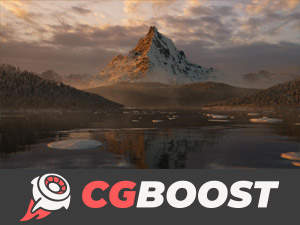Photography and 3d
Photo and 3d are two different worlds. But many 3d artists are also photographers, and making photos as an amateur, expert or pro can help your 3d work tremendousely
I am not the only example of an amateur photographer that also does 3d as a hobby. For instance, fellow French landscape artist Luc Bianco is also a gifted photographer though he chose to work with the dark side (he is a Nikon user, I use Canon).
Photography can be helpful for a number of things to the 3d artist.
Texture and reference pictures
Of course, you can simply use your camera to capture images that you will later use in your 3d work. I regularly shoot textures when I encounter something interesting (lately mostly stone walls and old doors), but photos can also be used as references for lighting, modelling or composition.
Composition
When I started making 3d images, I did not really take care of composition. I generally only followed my inspiration... for the better or the worse. When I got interested in photography, I had to take care of it. I now think about it almost every time I make a new image, trying to place important elements in definite places, following the rule of thirds when appropriate. When you make a 3d scene, you start from a blank scene. Composition is entirely up to you and it should be better than in photographs where you have to provide a vision of an existing scene.
Field of view
Using a SLR, you quickly get acquainted with lenses and focal lenghts. These are also present in 3d, where you can generally define the field of view of your main camera. Focal lenghts are important in composition and often neglected in 3d where people often leave this parameter to default (eg: 35mm in Vue). While you almost never use the longest focal lenghts in 3d, you may get interesting effects by using focal lenghts from 17mm to 150mm.
Format
When you use a camera, your composition efforts are limited by the format of the sensor, or film surface you are using. In traditional cameras, the format is typically 3/2 or 4/3 in digital ones, while some medium format cameras have other formats: 6/7 or even square. Anyway, most cameras cannot change format and changes in that way occur in post production by cropping or stitching different photos. The 3d artist enjoys a far greater freedom as he can choose whatever format he sees fit from square to panavision or even more panoramic format. This great freedom can be explored in a creative way to make more dynamic images.
Depth of field
Depth of field is an important element of realism in 3d... when properly used. With a camera, you have a shallow depth of field (and hence blurry foreground and background) only with longer focal lenghts and when the main subject is close to the camera. Oftentimes, you will see images with out of focus area in 3d that look fake... because they were "shot" with a wide angle and because in real life, wide angles have large depth of field. A regular practice of photography trains the eye which helps spotting those inconsistencies.
What to do with both
Photorealism can get interesting in 3d, but unless used for a specific purpose (architectural renders for instance), it can get boring. Desperately trying to mimic specific aspects of mundane objects has no real interest. You can make it far more simply with a camera. When I make an image, I often question myself: would I be able to make this easily with a camera? Most of the time the answer is no. The bottom line is: use 3d to make images that would be impossible to do in real life.

